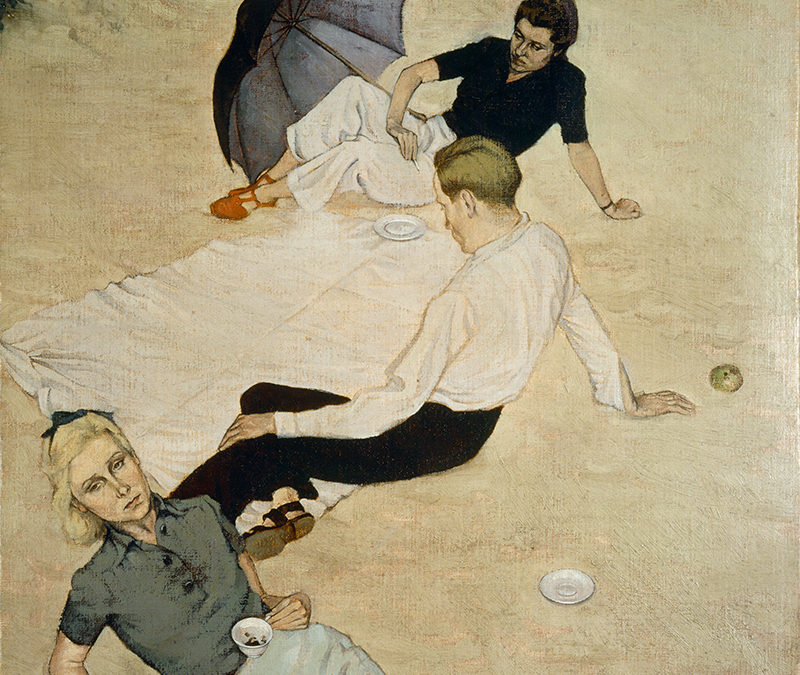Le Brocquy’s second wife, Anne Madden, remembers that the model in A Picnic was a friend. She preferred not to remember the woman in black and white (next to the umbrella) is Le Brocquy’s first wife, Jane Stoney. (She’s the same pensive woman in the portrait The Woman in Gray.)
With hindsight, Le Brocquy recalled, “I now see that, in this work, I was already groping towards that invisible reality that lies within us—our most profound reality I imagine –the spirit, the inner consciousness of the individual human being.” More likely, he seems to have been groping to get out of his marriage, and they separated irrevocably in 1940.
The contrasting clothing of Stoney’s black blouse, white pants, and the man’s white shirt and black pants suggest their incompatibility. And they do not touch. A green apple, perhaps a symbol of love gone sour, sits on the sand just beyond Le Brocquy’s hand, untouched. Perhaps, the teacup suggests civility, maybe not.
Le Brocquy’s affinity for isolation and despair found a kindred spirit in Samuel Beckett. He designed the set for a 1988 production of Beckett’s Waiting for Godot [See a posting for Beckett’s Godot elsewhere in PicnicWit.]
Featured Image: The picnickers neither smile nor make eye contact. Louis Le Brocquy. A Picnic (1940) wax-resin medium on canvas mounted on hardboard. Dublin: Irish Museum of Modern Art, Beecher Collection.
See http://www.anne-madden.com/LeBPages/chronology1.html.

